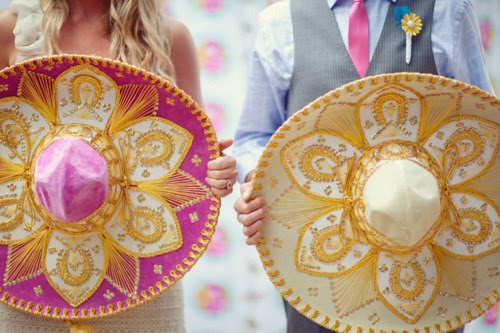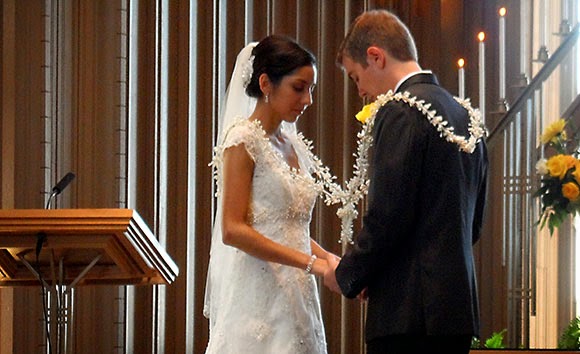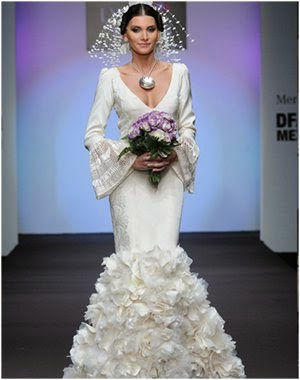What every Bride needs to know about Mexican Wedding Traditions
Mexico was for many years an amazing destination for romance and honeymoons. With a certain number of Supreme places that make the perfect setting for the wedding , fascinating places of the country, openness, tender climate and agreeable atmosphere are just some of the causes why more couples find themselves wedded south of the frontier.
Possessing years of experience in the destination wedding business, the homeland grants wedding professionals informed, the creation of artistic performances and culinary offer out-of-this-world. With a number of cultural, adventure and social activities, a wedding in Mexico is still the excellent reason for a vacation! What really sets Mexico exclusively as a first wedding location is a great regard for weddings detail? This is essentially due to the significance of wedding in the Mexican society, which guarantees that all wedding in Mexico is just the distinguished quality.
With the people of Mexico for being such passionate and most of the traditional religious enthusiasm, the party such as weddings in Mexico can vary from weddings in other traditions, and we guess it would be joy to share some the at-dos “the most interesting that relate to a traditional Mexican wedding party and that traditionally and usually involves: close parents and friends say -No few but clusters-, kind of ethnic food, music, and religious practices, in a series of high typology celebrations. In Mexico, we glorify with honor when people commit to love.
Wedding Ceremony:
Mexican weddings are deep in customs and traditions that are infused with Mexican memoir and beliefs of the Roman Catholic Church. Many rituals still repeated in Mexican weddings as far back as seven centuries. Weddings are almost held in a Roman Catholic church, are very spiritual and involve a solid mass, where the married couple is considered for eternity. The “y el Novio Novia” (bride and groom) and accompanying standing or kneeling at the alter church.
Family, sponsors “Godparents” play a leading role in the ceremony. During the sponsors of the liturgy, can present them with gifts of a prayer book, rosary on his knees and pillow.
The “Lazo”:
The “Lazo” is a kind of cord attached that can be made from something simple like a ribbon, adorned with something like a rosary – or pearls or precious stones, silver filigree, crystals, satin or crown orange flowers, fertility symbols- to symbolically join the bride and groom. It is placed around the neck of the couple – in number 8 after they exchanged vows to represent their future interconnected; the junction of two lives. It is also called “LACE UNITY.” Usually, the family of the bride and groom, Padirnos or best friends of the couple is solely responsible for “lasso” honeymooners together. Tradition requires the couple to wear for the rest lasso service. the lasso is a traditional rope or beads or gems (or both in some cases) that is placed on the couple, as they say, their vows. the rope is intended to symbolize the union statement and solidarity that the couple did. the lasso tends to be limited to religious ceremonies.
In some of the spiritual ceremonies of the majority that can be performed in Mexico, some of the moretraditional Mayan rituals, even a lasso is also used, only it’s made with natural elements like flowers or sisal, seating ritual varies from regions of Mexico and specific Aboriginal groups to run it.
An “offend” or the offer is usually made from the bride to the Virgin of Guadalupe in the church when in a Catholic ceremony, and so she kneels and prays with and leaves a bouquet of flowers to ‘the altar icon of the Virgin at the end of the ceremony before the church procession.
At a certain Mayan ceremony shamans allow the bride and groom also make an offer of a flor de mayo bouquet (frangipani) in Ceiba tree, the sacred tree of the Maya, which brings together the heavens and the hell.
Padrinos:
In Mexico, the couple chooses those who would be “mentors” for the couple during the commitment and wedding. They are usually people who have represented a powerful role in the circumstances of the bride and groom or their parents, they habitually harmonize as witnesses both their civil union. Sometimes, in most popular houses or towns, the “Padrinos” support the spouse and groom and pay for parts of marriages, a sort of “sponsors” of one or other of the phases of marriage, they would also participate in church services as a guest of honor near the couple.
Those selected as “padrinos” or sponsors are given the nickname “cronies” and involves families or friends in the system close to “compadrazgo” and the exchange of gifts.
Wedding outfit:
Latina brides possess a diversity of choices for their wedding dress. While some brides chose a traditional wedding. As popular as Spanish culture is the mantilla style veil instead of regular sailing.
Depending on the region of Mexico you are and the type of education, customs for your wedding could differ greatly from each other … for wedding dresses can also vary from one place in a simple cotton silk elaborate or an embroidered velvet.
For example, there is a tradition where the bride sews three ribbons, yellow, blue, and red in his underwear for good luck. The ribbons are intended to ensure the availability of food, money, and passion in the coming years and yes, it is not visible, but it is a part of the traditions and preparations, in more modern families, it would only wear a blue garter color (as in something blue).
Las Arras:
In a tradition attending backward to antique Rome, it is habitual for the groom to give the bride with coins at the ceremony. The custom of the 13 gold coins from Spain, where the sign pictures Jesus and the twelve witnesses. The gift of the pieces included more than once in a gift box or tray decorated, and are blessed by the priest in Catholic ceremonies are supposed to represent the groom’s commitment to support his wife throughout their life together and acceptance symbolizes his promise to take care of him. The groom would pay 13 coins blessed in the hand of his wife and gives her a box in which to place them in a safe place.
Food:
In most traditional cities, the wedding menu may incorporate chicken or pork, fresh dishes of rice, beans, and tortillas. In the most common marriage of a beef or chicken with a side menu or potatoes and salad, is more likely. But menus can get as fancy as the budget allows, with culinary creativity and wedding menus Mexican ingredients can become the center of many celebrations.
In weddings and social events in the Huasteca region, a large Tamale called Zacahuilis is cooked overnight in a hole in the ground and then distributed between 50 and 150 people. It is made of corn powder, butter, peppers and the ground pork.
Some traditional Mexican Wedding cakes are often cakes soaked fruits in rum filled with pineapple, pecans, and coconut. The “3 leches” cake is typical in all of Mexico, but in Oaxaca for example, they prefer a normal cake that is “dry” Whereas it is to be held for several hours before consumption, in some .when typical weddings, more than 500 people is considered “normal.”
Also, another cake should be remembered, is the local favorite Pastel de Almendra (almond cake), the grandmother of all say it has the best recipe … There is also the traditional candy almonds are given as favors at weddings, they can be made in all shapes and colors, and are very good!
Beverages
Famous fresh waters of Mexico are a delicacy and a lot of time had refreshments on arrival at the reception hall: Horchata, Tamarindo, chilacayota, zapote negro, Jamaica, tuna, etc.
One thing that is curious customs of Oaxaca is that in villages, before you start with the banquet, you can receive a large bowl of hot chocolate with chocolate (always prepared with water never milk) and a large piece of bread called pan yolk.
Tequila, rum, whiskey, vodka, and beer are usually taken at weddings, in many cases most of the traditional parties in typical cities have beer and local spirits instead (Mezcal, Xcanbentun, Bacanora, Posh, etc).



